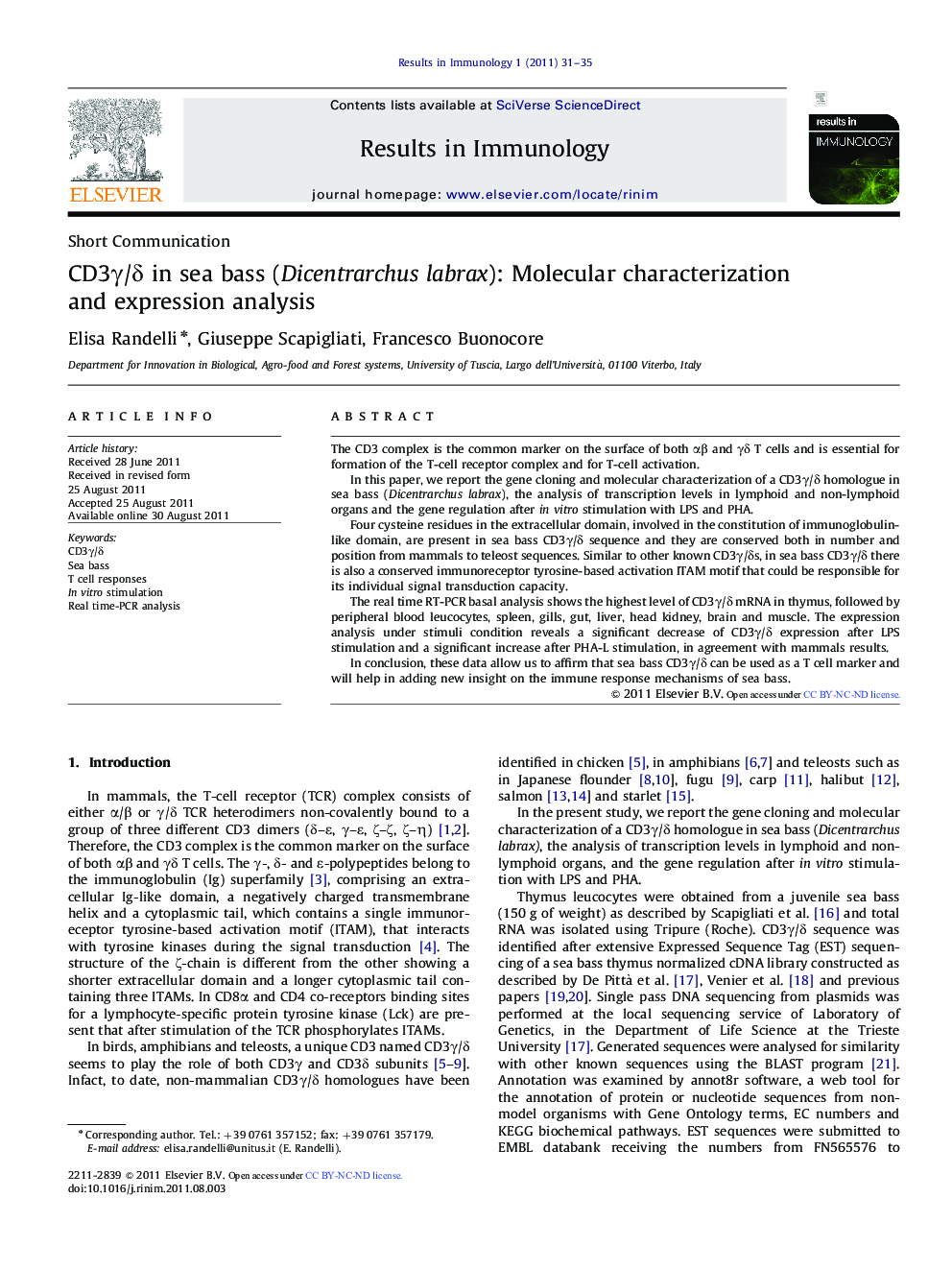| Article ID | Journal | Published Year | Pages | File Type |
|---|---|---|---|---|
| 2202406 | Results in Immunology | 2011 | 5 Pages |
The CD3 complex is the common marker on the surface of both αβ and γδ T cells and is essential for formation of the T-cell receptor complex and for T-cell activation.In this paper, we report the gene cloning and molecular characterization of a CD3γ/δ homologue in sea bass (Dicentrarchus labrax), the analysis of transcription levels in lymphoid and non-lymphoid organs and the gene regulation after in vitro stimulation with LPS and PHA.Four cysteine residues in the extracellular domain, involved in the constitution of immunoglobulin-like domain, are present in sea bass CD3γ/δ sequence and they are conserved both in number and position from mammals to teleost sequences. Similar to other known CD3γ/δs, in sea bass CD3γ/δ there is also a conserved immunoreceptor tyrosine-based activation ITAM motif that could be responsible for its individual signal transduction capacity.The real time RT-PCR basal analysis shows the highest level of CD3γ/δ mRNA in thymus, followed by peripheral blood leucocytes, spleen, gills, gut, liver, head kidney, brain and muscle. The expression analysis under stimuli condition reveals a significant decrease of CD3γ/δ expression after LPS stimulation and a significant increase after PHA-L stimulation, in agreement with mammals results.In conclusion, these data allow us to affirm that sea bass CD3γ/δ can be used as a T cell marker and will help in adding new insight on the immune response mechanisms of sea bass.
► The CD3 complex is the common marker on the surface of both αβ and γδ T cells. ► The present study reports the molecular characterization of a CD3γ/δ in sea bass. ► The analysis of transcription levels in lymphoid and non-lymphoid organs has been performed. ► Gene regulation after in vitro stimulation with LPS and PHA has been investigated. ► The data allow us to affirm that sea bass CD3γ/δ can be used as a T cell marker.
